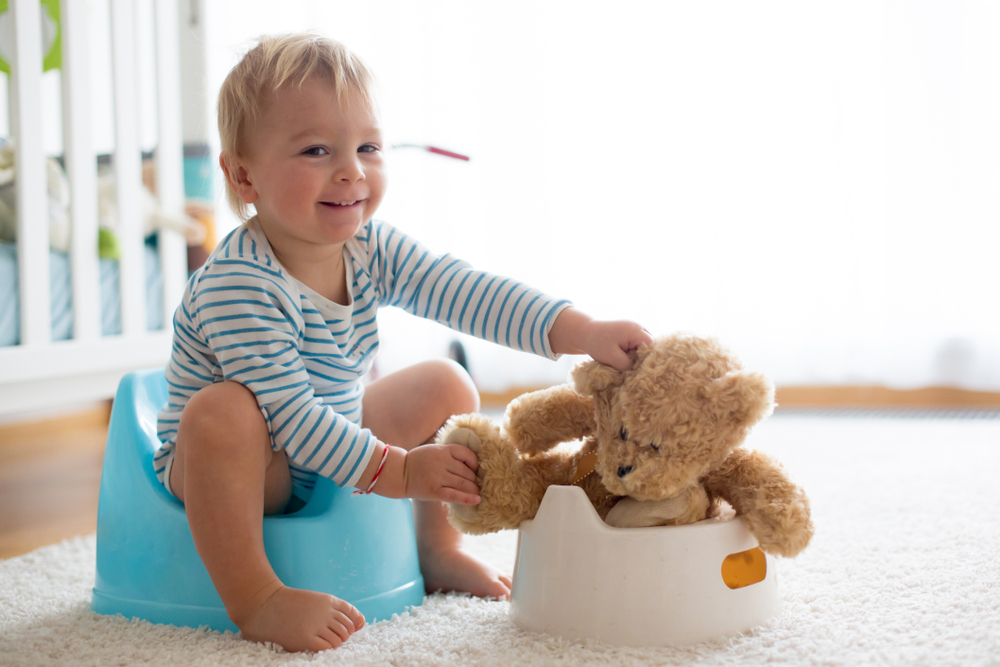You’re knee-deep in diapers when you have a baby. They’re safely tucked up in your luggage. Near the crib. Underneath the mattresses. You may even keep a handful in the glove box of your vehicle as a backup.
Diapers have been a part of your life and the best baby care products for so long that it’s difficult to fathom without using them. It seems like the day will never come when your kid strolls into the bathroom, pee or defecate, wipe, wash hands, and walk out without your knowledge.
Nonetheless, that day will come eventually. And it’ll be as beautiful as you’ve imagined it to be. However, the difference between that is potty training, or to use the grown-up word, toilet training. You may be prepared to make the change, but is your child?
When Should You Begin Potty Training?
Every child’s timetable is different for toilet training, just as it is with talking, walking, and sleeping through the night. There is no one-size-fits-all age to begin toilet training. What will you do if you’re unsure whether your kid is ready?
Whether or whether your kid is ready is determined by their physical and mental state. Many children exhibit curiosity around the age of two, while others remain uninterested until two and a half or three years old. There are, however, always exceptions. Girls are more likely than boys to express curiosity and are faster at grasping the concept.
There’s no rush to get a toilet seat the moment your toddler starts asking questions. First, ask yourself a couple questions:
- Can my toddler sit on a toilet seat and stand up without my assistance?
- Are they able to follow simple instructions?
- Do they inform me when it is time to leave?
- Is it possible for my kid to remove their diapers, training pants, or underwear without my assistance?
- Can they keep a diaper dry for at least 2 hours while controlling bladder and bowel muscles?
Your youngster is ready if you respond yes to those questions. But are you? Having a potty-trained kid requires effort, concentration, and patience. It may be better to hold off if:
- You’re expecting a second kid.
- You’re on your way to somewhere new.
- Your youngster is making the transition from a crib to a bed.
- Your youngster is ill, particularly if they have diarrhea.
Waiting until you’ve established back into a schedule can help you both succeed.
Tips for Potty Training
- Be a good toilet role model. Use the time you spend in the restroom to talk your kid through the procedure. Use languages that your youngster understands, such as pee, feces, and toilet.
- If you intend to introduce your kid to a toilet seat, keep it in the bathroom until they are comfortable with it. Make it a delightful area for your kid to sit, whether they are wearing a diaper. Allow them to sit on the potty while you read or play with a toy.
- Pay attention to hints. Keep an eye on how your youngster acts when urinating or defecating. Listen for grunting noises and look for a crimson face. Then get them to the bathroom as soon as possible!
- Keep track of when they pee and defecate throughout the day. Then, particularly after meals or after drinking a lot of liquids, develop a schedule in which your kid sits on the toilet during certain times.
- Dress them in attire that they can handle on their own.
- Teach children how to wipe correctly from front to back and wash their hands afterward. Boys learn to pee more quickly when they sit down initially.
When it comes to potty training, patience is critical. Sitting on the toilet should be a choice, not a necessity. Don’t impose anything on your youngster if they aren’t interested. Just take it easy!










